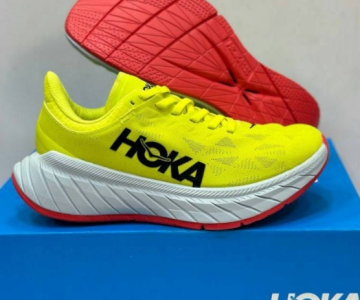If you’re a runner, chances are you’ve heard of Strava—the popular “social network for athletes” that has been around since 2009. Whether you’re new to the app or just haven’t explored its full potential, we’re here to guide you through the basics of getting started. Soon, you’ll be tracking your runs, interacting with fellow athletes, joining challenges, and even creating your own custom routes.
Strava combines the features of social media with activity tracking, similar to apps like RunKeeper or MapMyRun. It’s free to use on both mobile and desktop platforms, though you can opt for a premium subscription if you want access to advanced features.
Tools You Need to Use Strava
To get the most out of Strava, you’ll need one or more devices: a smartphone, computer, or fitness tracker (like a GPS watch).
- Smartphone: Download the Strava app from the App Store (for iPhone) or Google Play (for Android).
- Desktop: Visit strava.com to access your account via a web browser.
- Fitness Tracker: If you use a GPS watch, you can sync it with Strava to automatically upload your activities.
Creating Your Strava Account
Once you’ve chosen your device, the next step is to set up your Strava account. You can use your Facebook or Google account to sign up, or simply create an account with your email for added privacy. After completing the sign-up process, you’ll be ready to start exploring.
Keep in mind that your account holds your personal details, while your profile is what other Strava users will see (including your name, photo, and location).
Customizing Your Settings
Now that your account is set up, it’s time to personalize it. Strava offers plenty of customization options, especially when it comes to privacy and notifications. You’ll need to decide how much information you want to share and who can see your activities.
When you first join, Strava will prompt you to upload a photo, confirm your name, and fill out your birthday and gender. While these details help with leaderboard categorization, they aren’t required. You can skip most prompts for now and revisit them later as you get more familiar with the app.
To customize your settings:
- On desktop: Hover over your profile picture and click Settings.
- On mobile: Tap your profile and click the gear icon.
Explore the settings to update your notifications, linked devices, and more. Note that you can only add information about the shoes you wear through the desktop version.
Adjusting Privacy Settings
Strava offers robust privacy controls, allowing you to decide who can view your information and activities. Here’s what you can do:
- Data Permissions: Choose whether to share personal health data from your other devices.
- Privacy Controls: Set up privacy zones to hide sensitive locations (like your home) and opt out of contributing your data to Strava’s heatmaps.
- Training Log: You can make your training log public or keep it private depending on your preferences.
Recording Your Activities
Strava makes it easy to log your workouts in three ways:
- Manual Entry: On both desktop and mobile, click the plus sign to manually enter data from a run, if you don’t have a GPS device or app.
- Strava App: Open the app, tap the Record tab, and start your run. Strava will track your activity using your smartphone’s GPS. Afterward, save it to upload your data.
- Fitness Tracker: Sync your GPS watch with Strava so that your runs automatically upload. You can do this from the app by going to Settings > Applications, Services, and Devices and connecting your tracker.
Joining the Strava Community
One of Strava’s biggest draws is its social aspect. Here’s how you can get involved:
- Join Challenges: Participate in monthly or weekly challenges to push your limits alongside other users.
- Join Clubs: Find and join local clubs or virtual communities of runners. Clubs allow you to connect with others and see what your running peers are up to.
- Follow Friends: Search for your friends and fellow athletes to follow their activities. Leave them “kudos” (Strava’s version of a like) to show your support.
- Compete in Segments: Strava lets you track your performance on specific stretches of road or trail. You can compete for top spots on leaderboards for each segment, or even earn a “Local Legend” badge for running the segment most frequently.
Accessing Advanced Features
Once you’re comfortable using Strava, you may want to explore the premium subscription for access to additional features:
- Route Planning: Create custom routes and plan your training.
- Beacon: Share your location with friends and family in real time for safety.
- Advanced Metrics: Dive deeper into your performance data with more detailed statistics and training analysis.
Strava’s premium version also provides a comprehensive look at your segment times and allows you to track your progress against friends.
By taking advantage of Strava’s features, you’ll be able to elevate your training, stay motivated, and connect with a global running community. Happy running!





